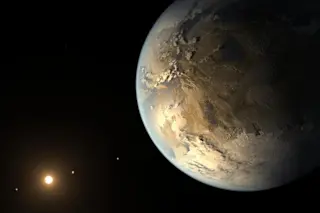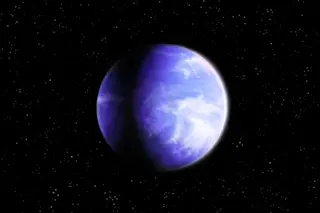A little more than 400 years ago, Italian philosopher and astronomer Giordano Bruno theorized that the universe was filled with an infinite number of stars orbited by an infinite number of worlds. For that astounding insight and others he was branded a heretic by the Catholic Church and burned at the stake.
When the late Carl Sagan made similar statements before TV audiences in the 1980s, he was spared the stake, but not the smug laughter of some of his fellow astronomers. They noted that no planet had yet been found in any galaxy beyond our own solar system. Still, Sagan's words rang convincingly in the minds of the millions who watched his Cosmos series-- there must be billions and billions of stars orbited by billions of planets. The most romantic implication of this vision was clear: Of those billions of other planets, some had to fall in the Goldilocks ...














